Trinova, USA LLC manufactures pinch valves and replacement sleeves known for outstanding performance, specifically in high abrasion environments. These valves and sleeves, manufactured in the United States, are frequently used in industrial applications, wastewater treatment, power generation and similar harsh environments. Constantly seeking solutions Trinova’s North American General Manager, Ben Payne, oversees procurement, production, engineering Read more
Featured Articles
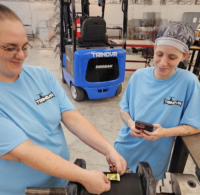
Trinova, USA LLC manufactures pinch valves and replacement sleeves known for outstanding performance, specifically in high abrasion environments. These valves and sleeves, manufactured in the United States, are frequently used in industrial applications, wastewater treatment, power generation and similar harsh environments.
Constantly seeking solutions
Trinova’s North American General Manager, Ben Payne, oversees procurement, production, engineering, manufacturing, customer service, and daily operations, which means that he’s a busy guy with, literally, lots of moving parts to his job. He is constantly on the lookout for a better way of doing things.
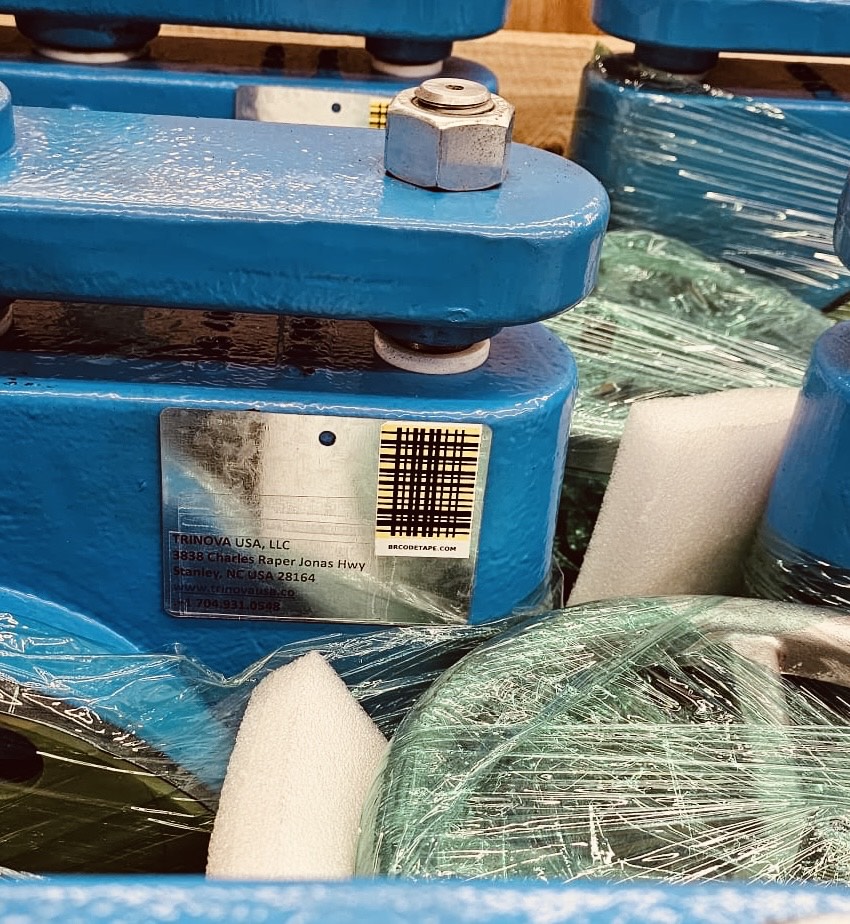 “We had been looking for ways to help our clients reduce their total cost of ownership by allowing them to eliminate manual tasks, such as maintenance logs, and save time by accessing all pertinent product information directly on their cell phone,” Payne explains. The company was also considering using barcodes to help with inventory management.
“We had been looking for ways to help our clients reduce their total cost of ownership by allowing them to eliminate manual tasks, such as maintenance logs, and save time by accessing all pertinent product information directly on their cell phone,” Payne explains. The company was also considering using barcodes to help with inventory management.
Then one of Payne’s colleagues suggested checking out BitRip®, a free app that seamlessly tracks any type of physical asset using preprinted, scannable BR Code labels from Duck Pro® by Shurtape®. The app easily integrates with Trinova’s existing software workflows, and each code stores massive amounts of data and tracks every scanned location, unlocking field-level visibility. The app and labels were conceived in field combat operations by retired U.S. Marine, Nick Dimitruk, who co-founded the company with Catherine Chapman.
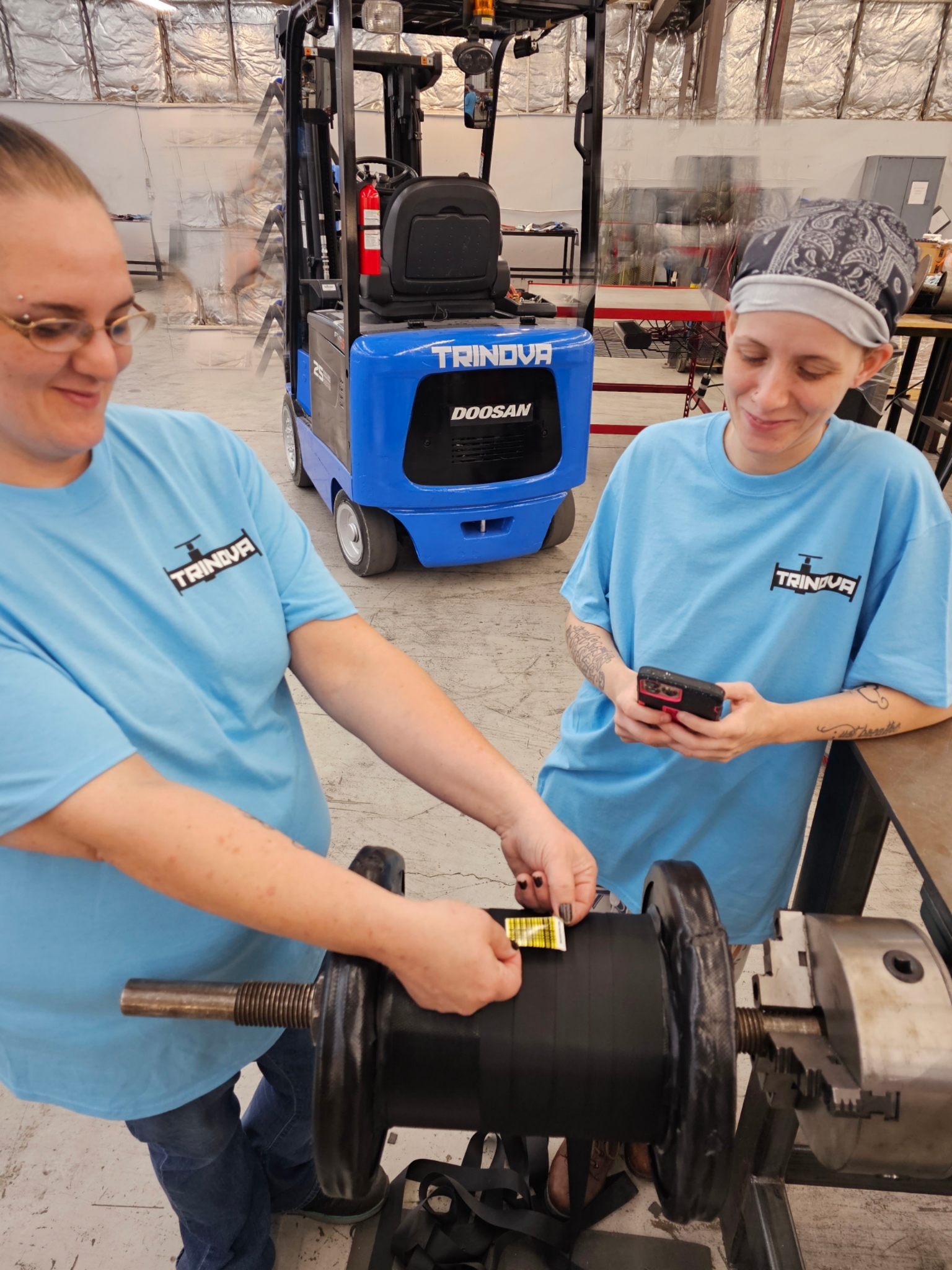 “We were in dirty, rapidly changing, dangerous places and using expensive, mission-critical gear. We realized that people in other industries had the same headaches, stress, and urgency to get the mission done quickly and effectively, so we invented this technology,” Dimitruk said.
“We were in dirty, rapidly changing, dangerous places and using expensive, mission-critical gear. We realized that people in other industries had the same headaches, stress, and urgency to get the mission done quickly and effectively, so we invented this technology,” Dimitruk said.
Payne says the concept of BR Code’s robust labels combined with cloud-based data was exactly what they were seeking regarding inventory management. “We saw that it was a better solution than just a plain barcode and that BitRip and the BR Code labels would allow us to control our inventory,” he said. However, Payne and his team soon realized they could add and update notes, purchase order numbers, invoice numbers and other types of information.
A sticky situation
Of course, making the solution work for this application was entirely dependent upon that label staying where it’s been placed. “We did a lot of trial and error to make sure the label would withstand our high-temperature manufacturing process as well as stay affixed when they are installed,” Payne adds. Trinova uses BR Code’s heaviest duty labels, called PXL, which have stood up to the challenge.
The team quickly found that BR Code labels hold up to—and thrive—in dirty, wet, industrial fields of applications like mines, water treatment and energy plants, and paper mills. They began affixing a label to every item that ships from its multiple locations. The Trinova team simply affixes a label and scans it with the BitRip app, and then adds whatever information they choose. Then, when a valve or a skid arrives at a jobsite for installation, anyone with the app and permission—the installer, end user, distributor, manufacturer’s rep—can scan the label and pull up the pertinent documents preloaded by Trinova.
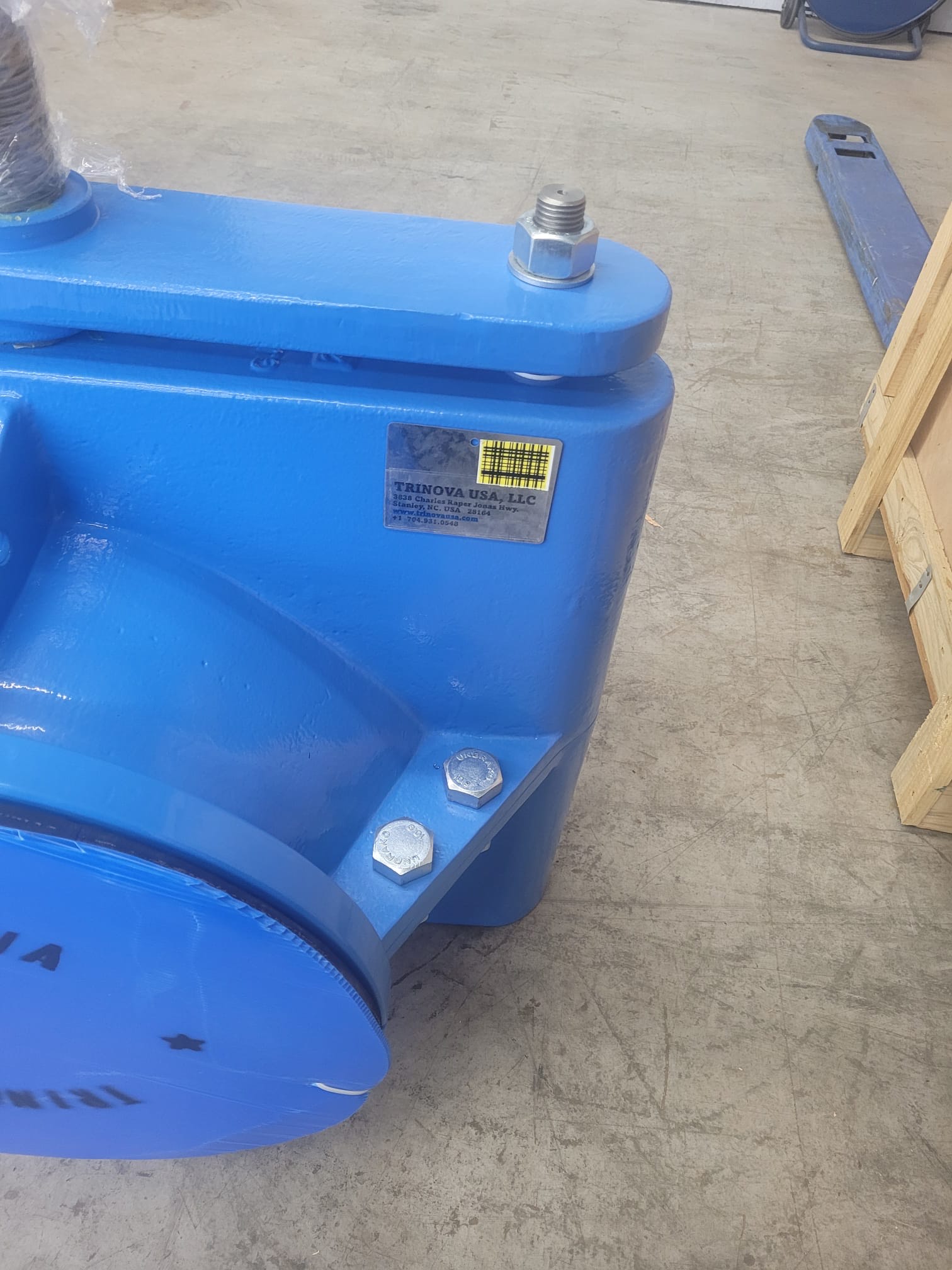 However, the field level user can also add any other information—installation date, operating instructions, etc.—and update it whenever they choose. Payne says offering this innovative technology to customers as a value-add has differentiated BitRip from its competitors. “The label can provide access to any information we choose, like the purchase order, client name, client address, job location, pictures of the product prior to shipment, installation and operation manuals, maintenance logs, and schedule,” he says. “Really anything you want to capture can be loaded onto BitRip.”
However, the field level user can also add any other information—installation date, operating instructions, etc.—and update it whenever they choose. Payne says offering this innovative technology to customers as a value-add has differentiated BitRip from its competitors. “The label can provide access to any information we choose, like the purchase order, client name, client address, job location, pictures of the product prior to shipment, installation and operation manuals, maintenance logs, and schedule,” he says. “Really anything you want to capture can be loaded onto BitRip.”
When the Trinova sales team mentions this option on sales calls, customers’ eyes frequently light up at the possibility of having such quick and easy on-the-go access to all this data—and the potential time and money savings. While Trinova can’t control how users use BitRip, they appreciate gaining insight they wouldn’t get otherwise.
One-way visibility is better than none
“We really like the visibility that we get in terms of seeing where our product is, wherever in the world it is. When a client scans it, it pulls a record and we can see, ‘oh, they did do maintenance,’ or if it’s a distributor, it tells us where they installed it,” Payne explains. Another differentiator from barcodes or QR codes is that there is no need for Trinova or its customers to keep a separate log of information—the documents specific to that one piece of labeled equipment are all right there in that digital, cloud-based file.
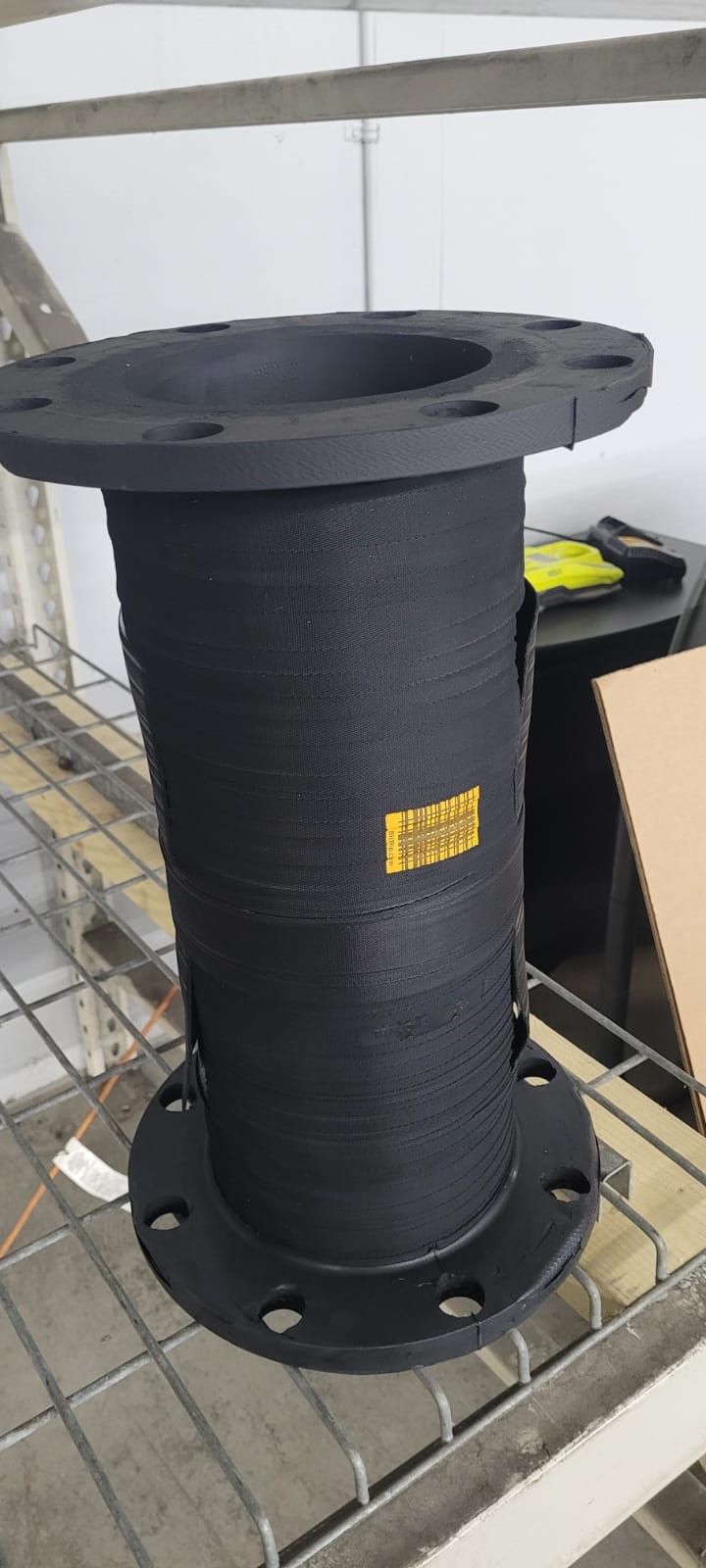 Once Trinova had settled on trying BitRip, the implementation was incredibly simple. “We just downloaded the app, purchased the labels, and that was it. It was very easy,” Payne says. He adds that the value gained from the app and labels pales in comparison to the miniscule cost and effort.
Once Trinova had settled on trying BitRip, the implementation was incredibly simple. “We just downloaded the app, purchased the labels, and that was it. It was very easy,” Payne says. He adds that the value gained from the app and labels pales in comparison to the miniscule cost and effort.
Trinova expects to potentially add installation and operation manuals, and drawings with basic dimensions, to BitRip in the future. Payne says that he would recommend the app and labels to any business, but he would prefer his competition ignoring the technology. Staying one step ahead of the competition is a key to any business’ success.

If last month’s attendance during the IBS/KBIS Show in Vegas is any sort of indicator for anything, in-person trade shows are still thriving. We’re hearing that this was the most attended show of the past 15 years. According to the National Association of Home Builders (NAHB), more than 76,000 builders, remodelers, developers and other home Read more
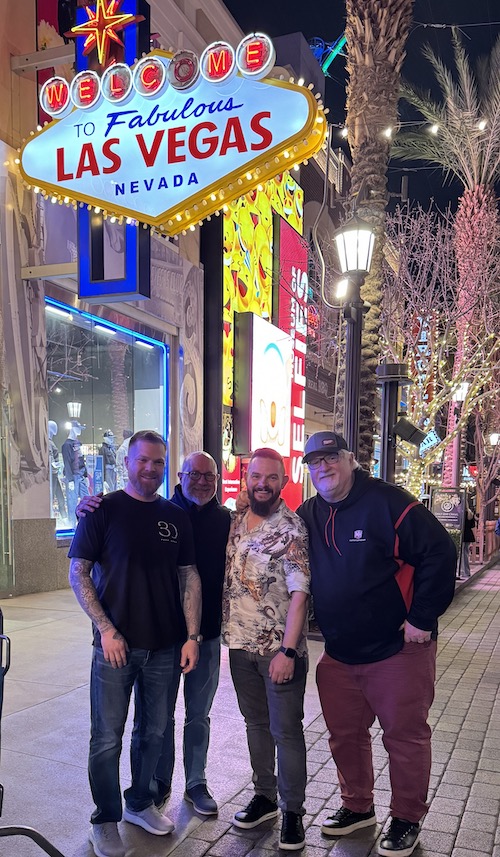
Running into friends while enjoying the Vegas nightlife.
If last month’s attendance during the IBS/KBIS Show in Vegas is any sort of indicator for anything, in-person trade shows are still thriving. We’re hearing that this was the most attended show of the past 15 years. According to the National Association of Home Builders (NAHB), more than 76,000 builders, remodelers, developers and other home building professionals filled the halls, “the highest level since 2009, which reflects the bullish outlook of the residential construction industry.”
This year also marked the 11th anniversary of Design & Construction Week® (DCW), the co-location of IBS and the National Kitchen & Bath Association’s (NKBA’s) Kitchen & Bath Industry Show (KBIS). DCW drew over 117,000 attendees, and more than 2,400 exhibitors occupied over one million net square feet of indoor and outdoor exhibits.
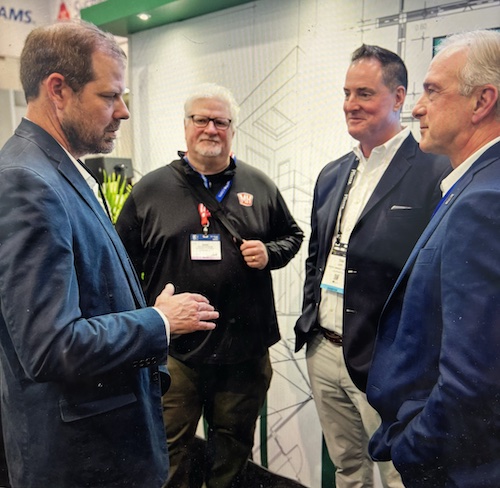
Pfister Faucet’s Spencer Brown, the Hub’s John Mesenbrink, Tim Goff, Pfister Faucets, and Dominic Sims, ICC, talk about the importance, and popularity, of the American Plumber Stories series.
Anyone who has visited the Las Vegas convention center knows that there are basically four separate halls—North, Central, South and West. I am of the opinion that the Central Hall usually gets the influx of traffic initially—over the course of the three-day event—with crossover to the North Hall fairly fluid. The North Hall is generally reserved for big bathroom players, and Central and South are filled with construction/builder booths. The West Hall, honestly, is almost at a different location where, in order to get there most of the time, you are sent underground, blindfolded and whisked through a tunnel via a manned Tesla. Pretty cool experience, actually, but not necessarily ideal if you are exhibiting in West because that’s where the trickle or “if I have enough time” traffic goes. My opinion, of course.
Oh, I almost forgot. There are a number of exhibitors set up outside—our friends from the Propane Education & Research Council (PERC), for example—right in front of Central Hall. The blue sky, 70° temps didn’t hurt those outdoor experiences either.
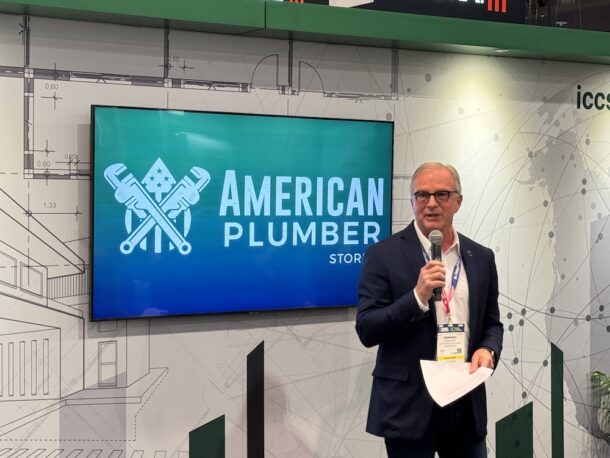
Dominic Sims CEO, International Code Council (ICC), talks about the partnership with American Plumber Stories for upcoming season 5 of the wildly popular docuseries.
Just a note of interest here, getting the show is getting easier with access to the monorail, which makes stops to a number of hotel locations—if it looks full, just keep nudging, you’ll find space—and hotel bus routes, which can be found in front of the Central Hall and to the side of the South Hall. Depending on when you are entering or leaving the show, Uber and taxi at your own risk.
Now, if you’ve been to the IBS/KBIS trades shows in recent past, you’ll know that the setup is pretty formulaic, but it was brought to my attention that this year they pretty much simplified the approach with similar products located near each other so you don’t have to break your Fitbit traversing the LVCC universe trying to find something.
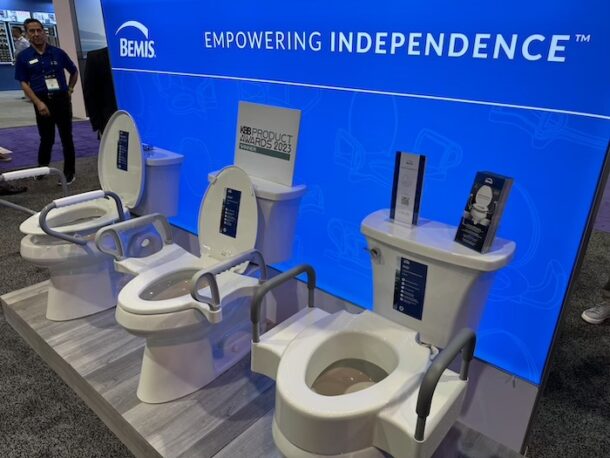
Everything from low-flow toilets, ADA & Living in Place to the latest in bidets, KBIS had it all. From the Bemis booth.
Invariably during every trade show I attend I get asked, “what was the most interesting thing you saw on the show floor?” Well, I gotta say it was the Genesis Systems WaterCube 100, which basically creates water out of the air. I was fairly shocked when I saw the size of this unit—large—to be installed on the exterior of the home. The company contends that the product sustainably generates more than 100 gallons of fresh water daily from the air around it—enough for a household of four, and it operates in humidity ranges of >40-100% and ideal climate temperatures of >59 degrees F.
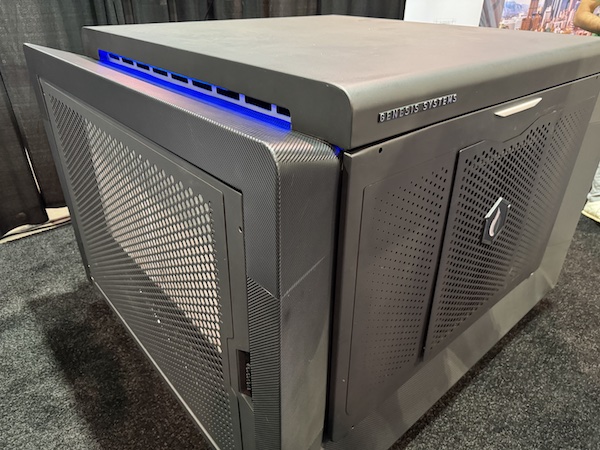
Genesis Systems WaterCube 100
In the North Hall, we saw everything from the latest in bidets, low-flow toilets, high-end kitchen and bathroom fixtures to fancy multi-colored bathtubs—a kitchen and bath designer’s fantasy space, if you will.
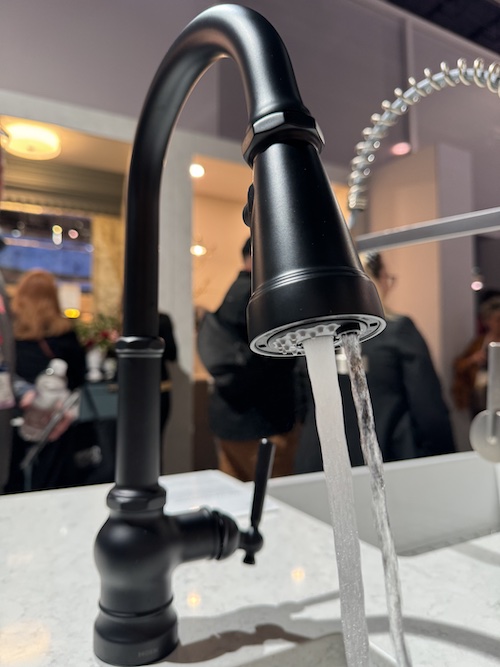
Moen’s 3-in-1 Water Filtration Pulldown faucets dispense filtered cold water and hot and cold tap water, including a three-function pultdown wand. 3-in-1 Water Filtration Kitchen Pulldowns pair with any Moen filtration system and are available in many styles and finish options.
“2024 marks the 60-year anniversary of KBIS—a tremendous accomplishment and an opportunity to not only celebrate our growth but to set goals for how we want to continue to elevate the show and help drive the industry forward,” said Bill Darcy, Global President & CEO of NKBA|KBIS. “We’ve had great success collaborating with NAHB and IBS and are proud to announce our continued partnership as part of this milestone year. As the kitchen, bath, and wider residential building, architect, design, and remodeling sectors continue to grow it’s more important than ever to provide a central source for inspiration and innovation.”
NAHB and NKBA announced an agreement to extend the co-location of IBS and KBIS for four years through 2030.
Next year, DCW will return to Las Vegas, Feb. 25-27.

See you next year in Vegas!

Renovating historical, urban buildings offers a great number of benefits over demolition and replacement, including lower embodied carbon and the alure of a bygone era blended with the comfort and convenience of the 21st century. As cities evolve, repurposing old buildings becomes integral to creating more resilient, resource-efficient, and culturally rich urban environments. But with Read more
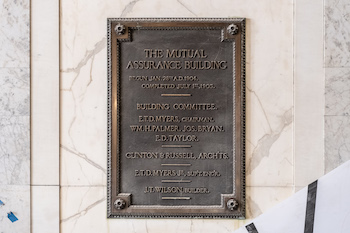
While working in the 120-year-old building, maintaining the historical integrity of the structure was one of the largest challenges all the contractors involved were faced with.
Renovating historical, urban buildings offers a great number of benefits over demolition and replacement, including lower embodied carbon and the alure of a bygone era blended with the comfort and convenience of the 21st century.
As cities evolve, repurposing old buildings becomes integral to creating more resilient, resource-efficient, and culturally rich urban environments.
But with miles of red tape to navigate, turn-of-the-century construction methods and materials to contend with, and special regulations to adhere to, revitalizing old urban structures requires a specialized team.
An outstanding example of the collaboration needed on such a project can be witnessed at The Mutual Building. It’s the oldest high-rise structure in Richmond, Va., originally housing a stock brokerage firm and later a law office. Built as a 9-floor building in the early 1900s, three additional stories were constructed later.
Key players
In November 2020, Shamin Hotels sold the 12-story building for $12.8 million to Landmark Property Services, Inc., a Richmond-based property management firm and The Wilton Companies, a Richmond-based commercial real estate firm. Their intent was to convert the high-rise into 168 upscale apartments. The 22-month project would present a wide array of challenges to overcome.
Landmark Property Services, Inc. sought the expertise of Walter Parks Architects (WPA) to help bring The Mutual Building to new grandeur.
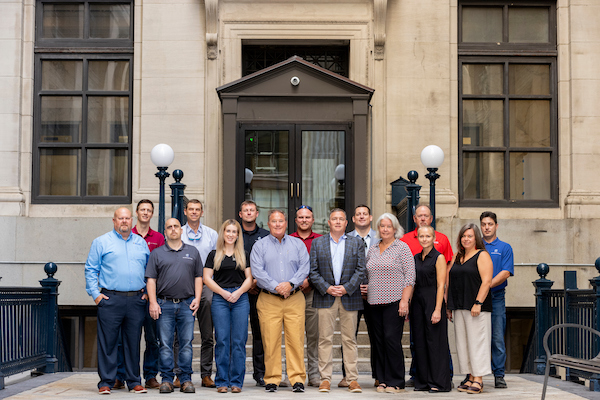
Representatives from Landmark Properties, Snyder Solutions, L.F. Jennings, Ferguson Enterprises and Harry Eklof & Associates gather in front of the main entrance.
“Our company specializes in historic tax credit work,” said Sarah McInerney, senior project manager at WPA, who completed the early project pro-forma. “Multi-family work is my preferred project type, though we handle other residential and medical facility projects as well.
WPA’s involvement included designing the apartments and working closely with the various engineers and contractors involved with the renovation. The firm has conducted similar work for 30 years, and McInerney herself for 20 years.
James Willis, design engineer at O’Neil Engineering, was one of McInerney’s first calls. WPA has worked with O’Neil Engineering on many similar projects. The involvement of a mechanical engineer familiar with challenges common to old buildings in Richmond would prove critical to success.
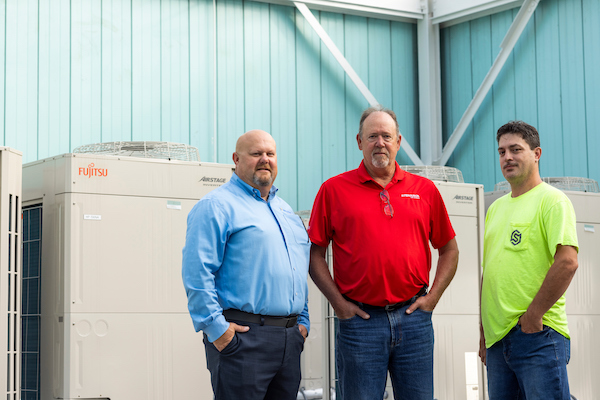
(left to right) Brian Adkins, with Harry Eklof & Associates, Alan Dukes, of Ferguson Enterprises, and John Jenkins, with Snyder Solutions.
Snyder Solutions, a full-service mechanical company founded by Ryan Snyder in 2009, was hired to install an extensive Fujitsu Airstage heat recovery VRF system to replace the boiler/chiller VAV system.
L.F. Jennings, a 350-person firm, was selected as the general contractor. They specialize in a broad array of project types but have relative experience with adaptive reuse, having just converted a similar office tower into apartments just two blocks away.
Unique challenges
“Qualifying for historic tax credits is a three-part process,” said McInerney. “The building must be nationally recognized in a historic district. Designers must comply with the Secretary of the Interior’s Standards for the Treatment of Historic Properties, and finally, the project must pass inspection by the Virginia Department of Historic Resources and the National Parks Service.”
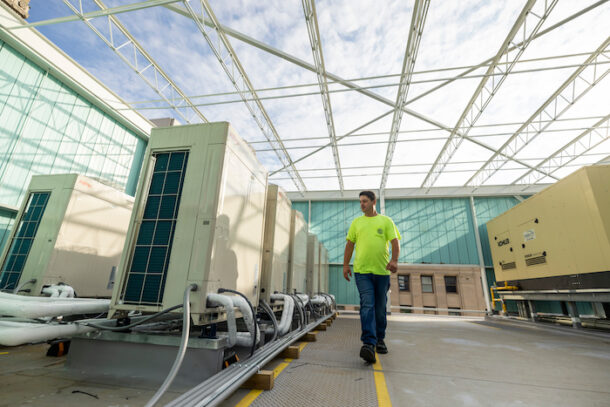
John Jenkins, assistant supervisor at Snyder Solutions, walks the rooftop of the Mutual Building.
All parties involved understood that installing new electrical, plumbing, heating and cooling systems must be completed in such a way that visual disturbance to the property, inside and out, be minimal. This meant preserving flooring, trim work, signage, and eliminating outdoor mechanical components from view.
To further complicate things, the building was originally constructed using a “Metropolitan Floor System.” Unlike conventional concrete or steel construction, the Metropolitan Floor System is an architectural relic from the 1890s utilizing pairs of twisted wires, as catenaries, draped over the steel floor beams and embedded in a plaster-of-Paris matrix. The load-bearing capability of the floor relies entirely on the tension in the wires.
Meticulous design
When working on the design, James Willis, Ryan Snyder and Andy Anderson, director of mechanical division at Snyder solutions, collaborated to confront their largest hurdle, the need to maintain the historical integrity of the building.
“If it weren’t for the need to conceal outdoor units, this project could have been conducted with mini-split heat pumps,” said Snyder. “But Willis determined that VRF systems would better serve the purpose. The outdoor units needed to be mounted so that all stories could be served by the new HVAC system, from the 12th floor down to the sub-basement. Landmark Properties has experience with VRF systems on other projects, so they understood the flexibility and efficiency it provides.”
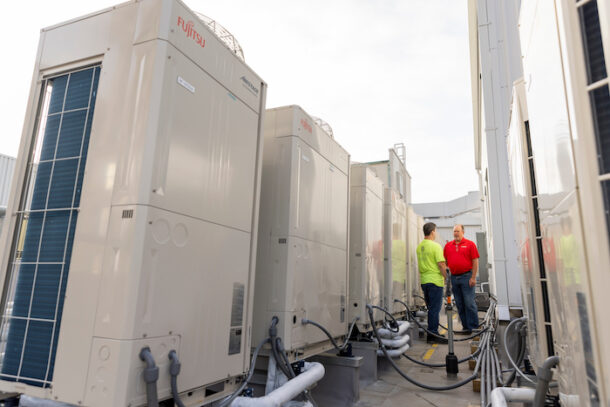
John Jenkins (left), assistant supervisor at Snyder Solutions, discusses the Fujitsu Airstage heat recovery installation with Alan Dukes, of Ferguson Enterprises.
Willis and the team at Snyder Solutions tapped Brian Adkins, HVAC sales manager at Harry Eklof & Associates, and Matt Coley, commercial HVAC manager at Ferguson Enterprises, for specifications on the Airstage heat recovery system.
“To overcome the vertical height challenges, we settled on a plan to mount the majority of the outdoor equipment on the roof,” said Willis. “This project had a zero lot line, with almost no room at ground level for equipment. To serve the lower levels of the building, we planned to install several systems in the light wells just below street grade, maintaining the original look of the building.”
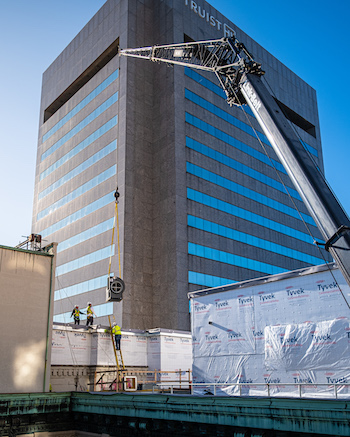
A fan used to pressurize stairwells and elevator shafts is craned to the roof of the building.
The five systems installed in the light wells serve the lower three levels of the building, which include the main floor lobby, mail room an indoor dog park, golf simulator, gym, and storage space.
In all, 200 tons of Fujitsu Airstage V-Series heat recovery equipment was installed, consisting of six, eight and 10-ton outdoor units. Inside, slim-duct air handlers were installed in living spaces, with ceiling cassettes in common areas. A total of 217 terminal units were installed.
This approach lent itself well to the building layout. Apartments range in size from 500 to 1,050 square feet, meaning that flexibility was needed in the HVAC design.
Training and support
Heat recovery VRF systems were selected over heat pump systems for the ability to provide simultaneous heating and cooling from the same system. Heat recovery has the added benefit of salvaging BTUs from a zone calling for cooling and rejecting the energy into a zone calling for heat.
One heat recovery system serves two floors. These systems are 16 tons in capacity, save those serving the lower three floors.
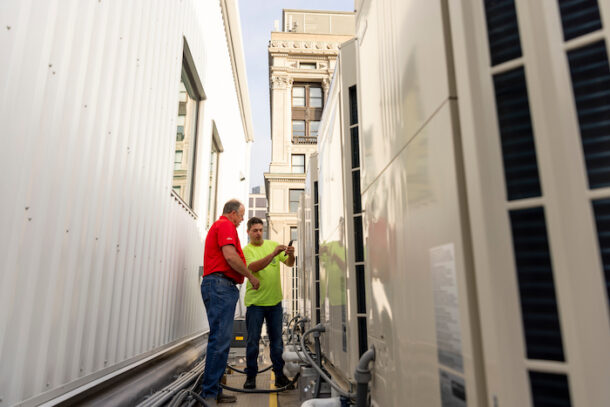
Alan Dukes (left), of Ferguson Enterprises, and John Jenkins, assistant supervisor at Snyder Solutions, discuss the Fujitsu Airstage heat recovery installation on the roof of the Mutual Building.
“When it came time to install the equipment, Alan Dukes, VRF Technical Advisor at Ferguson, was very involved,” said Willis. “We’ve worked extensively with him on other projects like this. He’s extremely detail oriented, and visited the site frequently to answer questions and ensure that the equipment was being installed to spec.”
Dukes has a relationship with Snyder Solutions, too. He has provided Fujitsu training to Snyder technicians in the past.
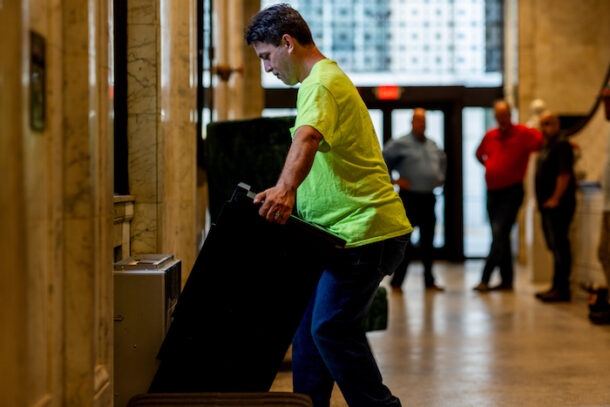
John Jenkins removes wooden casing from around a vertically-mounted Airstage ARUL slim duct fan coil.
“An application like this requires precision in the design and installation,” said Snyder. “We’ve worked with Ferguson since I founded Snyder Solutions, and Alan is the grandmaster of VRF. They don’t make guys like him anymore. He’s forgotten more about VRF than I’ll ever know.”
Snyder Solutions has one or two VRF projects going on at any given time, but this is the largest Fujitsu installation they’ve undertaken. The company’s initial training session with Dukes included 12 technicians at Ferguson’s Chesapeake location, and subsequent training sessions are ongoing.
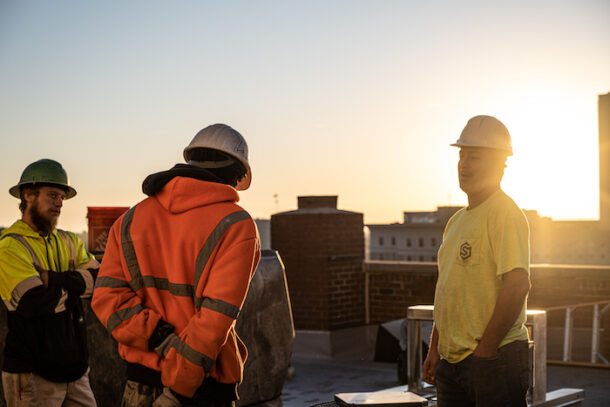
Snyder Solutions is a 100-person mechanical firm serving the Richmond metro, focused on commercial and industrial work.
“The help that Alan provides is a great example of why we install Fujitsu more often than other VRF brands,” said Snyder. “They give us the most support and the product quality is fantastic. From the factory team to the reps and wholesalers, they have a knowledgeable team that’s aways quick to help.”
Old building, new solutions
“Like most historical projects, there were no building blueprints to reference,” said Anderson. “You don’t know what you’ll run into until you open up walls and floors, at which point you need to come up with solutions on the fly. Pippa Brown, L.F. Jennings’ assistant project manager and lead coordinator, was a great asset whenever we ran into an issue. She kept everything on track with the retrofit’s objectives.”
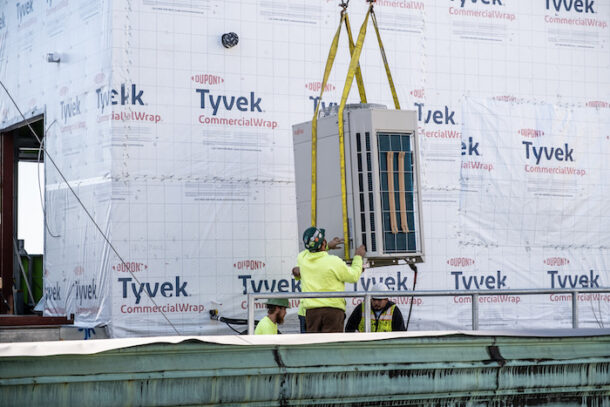
One of many Fujitsu Airstage heat recovery condensing units is craned to the 12th story roof.
Snyder Solutions technicians—led by Adam Mitchell, superintendent, Tony David, lead service technician, and John Jenkins, assistant superintendent— worked with the L.F. Jennings crew to open walls. Refrigerant lines were run down through stud bays. Terminal units and ductwork had to be hidden, and louvers could only be installed in specific places.
“We take great pride in creating solutions for difficult projects, and this one brought out the best of our team,” said Anderson. “There was no straight path from A to B, and we had to be careful not to disturb historical artifacts, like trim and molding.”
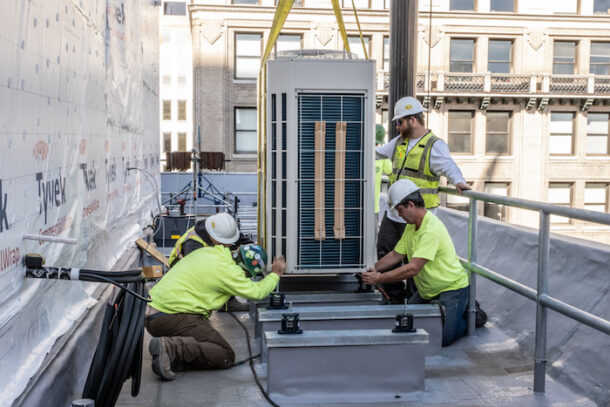
Airstage condensing units were mounted on seismic isolators.
The biggest hurdle, however, came each time the installation crew penetrated a floor. Thanks to the Metropolitan Floor System, this proved to be every bit the arduous task that Snyder Solutions and Willis knew it would be. O’Neil Engineering, Snyder Solutions and L.F. Jennings had previous experience with the unique system.
The catenary wire system within the plaster can’t simply be cut without compromising the integrity of the floor. To create a floor penetration, the plaster slab must be dug away, wires cut, and a custom fabricated steel sleeve inserted, designed in-house by L.F. Jennings and Balzer Associates. Once the sleeve is set, the wires are then secured to the sleeve and the penetration is poured back. There are various different penetration types and sleeve sizes that required coordination. These penetrations may be no less than nine inches apart, making plumbing penetrations especially difficult.
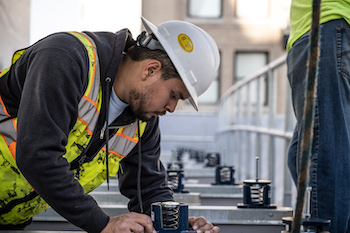
A Snyder Solutions crew prepares to mount heat recovery condensing units on seismic isolators.
To minimize the number of penetrations needed, combination sleeves were designed to house multiple penetrations in a line; only refrigerant lines, the plumbing system, and outdoor air risers run vertically through the building. All ductwork connected to the Fujitsu air handlers runs horizontally. Ventless dryers were used, so no drier stacks were needed.
A textbook success
Instead of commissioning all the VRF systems at once, Dukes worked with Snyder Solutions to start up each floor individually as they were completed from the top down.
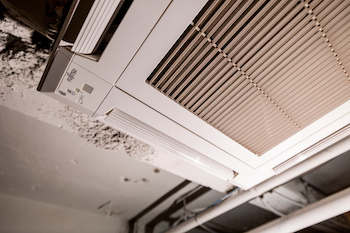
While most of the building is served by slim duct air handlers, a variety of ceiling cassettes were used on common areas storage space.
“The installation and commissioning went very smoothly,” said Dukes. “That’s a testament to a solid, adaptable design, fantastic communication between all parties, and an installation team that really committed to doing their best work.”
“The building has been occupied for almost a year and we’ve had no issues,” said Snyder. “With the number of systems installed here and the severity of last summer, it’s quite impressive. I can proudly say that we delivered what we promised.”
This project exemplifies the delicate dance between preserving the past and embracing the future in architectural endeavors.
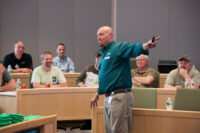
Training in 2024 is just as important as ever. How do you integrate training, education and continued learning with today’s busy contractor? Power Points, sales pitches and doughnuts. Tried and true methods of training gone by, that’s for sure. But what does today’s training look like, especially in the purview of the younger generation of Read more
Training in 2024 is just as important as ever. How do you integrate training, education and continued learning with today’s busy contractor?
Power Points, sales pitches and doughnuts. Tried and true methods of training gone by, that’s for sure. But what does today’s training look like, especially in the purview of the younger generation of contractors that digests information in 90 seconds or less?
“What was that? Sorry, I was looking at my phone,” jokes Max Rohr, Director, Education and Technical Marketing, Caleffi. “Five years ago, a three-minute-long video was a good option, now it will seem long if it is over that 90-second threshold. Ideally, you get to the point in the first five seconds and work the explanation back from there. Like showing the cake and then going back to bowls of ingredients.”
According to, Dave Holdorf, Residential Trainer & Rep Training Manager—Eastern Region, Taco Comfort Solutions, it’s a challenge. “We’ve found that it helps to bring different instructors in for specific segments of the training. Each instructor brings their own perspective; even hearing a different voice in the room makes for a more compelling presentation. Every facet of our training is now geared to maintain the attention of participants. We also make sure to schedule breaks so that the attendees can attend to business, or need at home. By creating the curriculum with attendees in mind, their focus remains with the topic in front of them.”
Nevertheless, the training department at Taco has always looked at training not from a product view but from an application perspective, giving attendees the information they need to do their job better, and to give their customers the comfort they deserve. “We use real world experiences to solve real world problems with personal experiences and a bit of humor—as you know, John, it ain’t worth doing if you’re not having fun as well,” says Holdorf.
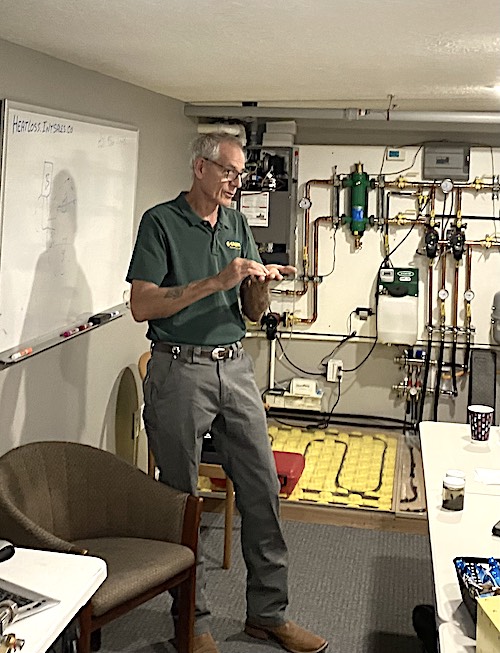
Caleffi’s Bob “Hot Rod” Rohr brings his props and his wealth of experience and knowledge to trainings.
But what about those PowerPoints and doughnuts? “Every learning style is different, so you have to be adaptable. If you see the audience tuning out a PowerPoint, stop and grab a product to bring to an attendee and talk about a case study that is related instead,” says Rohr.
In addition, everything falls apart for a trainer if the audience gets the impression they are overpromising, adds Rohr. For example, “Honesty is something Hot Rod is specifically good at in contractor training sessions. As a former installer, he always has tips for getting the job done and workarounds that are really tangible,” says Rohr.
The New Normal?
The Covid pandemic saw what we thought was going to be a new normal with virtual training, but what we are now seeing is the importance, and return, of in-person training.
This past year Taco saw a huge jump of in-person training, on the road as well as at Taco HQ in Rhode Island. So much so that the company had to dramatically increase the number of sessions back in Rhode Island to accommodate. “However, that does not mean to diminish the virtual training, Taco Tuesday and Taco After Dark webinars are still posting a large number of attendees that are hungry for information in bite size chunks, not as large as when we all locked down at home, but still popular,” says Holdorf.
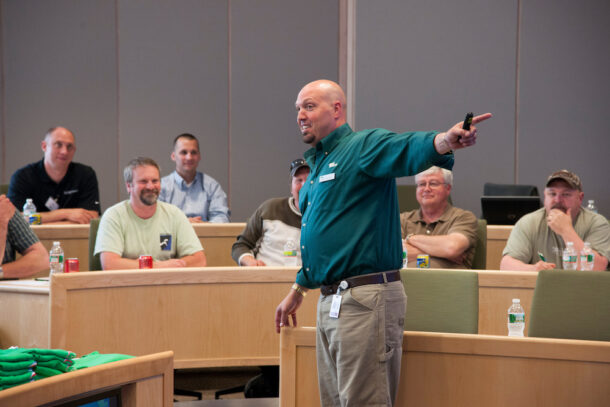
Taco’s Holdorf conducts a training at the Cranston, R.I. HQ.
Nonetheless, “when we’re online, we know it’s so easy to stray off to the next shiny thing online, so to keep attendees engaged, we encourage two-way communications. If participants have questions, we want them to ask immediately,” continues Holdorf.
In fact, Holdorf says that people who attend Taco’s webinars typically take it to the next level and seek live training. A combination of both virtual and live training can help attendees dial in on what they want to learn—or perhaps didn’t initially develop a full understanding of what it is they most needed to know. “These options allow them to fine-tune their training experience to make them as good as they want to be. And, ideally, we help them raise the bar. We routinely heard from trade pros who came to us for a better understanding of a single application or concept, and through that experience come away with an energized desire for much more,” says Holdorf.
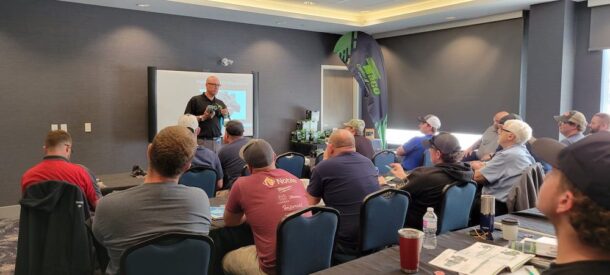
In 2023, Caleffi performed almost a 50/50 mix of in-person and virtual. Contractors like hands-on training, says Rohr, so it is good to be back on job sites for that type of interaction. And, engineers didn’t all go back to the office after COVID. “Many of the engineering sessions we do are virtual because that firm may be scattered all over the region. You might catch 20 people in a virtual training, where only 10 of them are in the office that day,” says Rohr.
Know-It-Alls
What about those who are stubborn enough to think that they don’t need further education and training? “I love this question and see and hear it often in the industry,” says Ken Midgett, L.M.P, Plumbing, Marketing Director, Interplay Learning, and former Teacher and Apprenticeship Instructor, Lehigh Career & Technical Institute.
Those in skilled trades should embrace the concept of being “lifelong learners,” consistently expanding their knowledge in their current specialty and exploring related disciplines. Whether licensed or not, individuals in skilled trades should assess their goals, career paths and professional growth within their field. It’s common for some to reach a point where they feel adequately skilled and think further education is unnecessary. According to Midgett, this assumption is misleading for several reasons:
• For example, a residential plumber could benefit from learning about commercial plumbing, Med Gas, Backflow, Water Well work, Water Conditioning, HVAC, Electrical, etc. Diversifying skills not only enhances one’s expertise but also increases their marketability across various skill sets, intern boosting income and long-term employability.
• Despite advancements in safety measures within the construction industry, the misconception that skilled trades workers are immune to injuries persists. While the overall safety landscape has improved, life-changing injuries can still occur. In such unfortunate instances, if an individual can only rely on skills specific to their trade and lacks versatility, their career may face irreparable damage. Therefore, investing in ongoing training, education, and professional development becomes crucial for ensuring resilience in the workforce and mitigating the impact of unforeseen challenges. Repurposing skillsets may be challenging when there has been no prior skill or professional development planning before the injury event.
• The industry, codes, tools, and methods to do a task are constantly changing. Skilled trades workers need to educate themselves and stay on top of new developments. This is critical to the success of a technician and company.
In the end, it’s what ends up in the ol’ noggin as useful information that translates to the jobsite. “Students only retain a tiny amount of the information that you present to them, but they will remember their feelings about the trainer for a very long time,” says Rohr. “It is hard to know if a bigger win is when customers retain a piece of information you presented or if they remember that you seem like you know what you are talking about. “If they trust that you did a good job, that memory will stay with them for a career, potentially.”
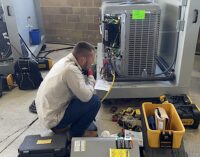
Mechanical Hub recently talked with Rich Camacho, CEO, Blue Recruit, about the hiring of qualified candidates to potential trade jobs. Blue Recruit is a company that provides skilled workers with a revolutionary path to success. While that mission is straightforward, reaching that goal requires tremendous collaboration between industry, educational systems and supporting organizations. Here is Read more
Mechanical Hub recently talked with Rich Camacho, CEO, Blue Recruit, about the hiring of qualified candidates to potential trade jobs. Blue Recruit is a company that provides skilled workers with a revolutionary path to success. While that mission is straightforward, reaching that goal requires tremendous collaboration between industry, educational systems and supporting organizations. Here is our discussion with Rich:
MH: What do you think the industry (PHVAC) can be doing better to recruit more to the trades?
CAMACHO: An issue we hear constantly amongst PHVAC companies, to a far greater extent than any other trade, is the idea that their company is “different.” I don’t know if it is a culture issue within PHVAC or a lack of competitor awareness, but many PHVAC owners have this misguided belief that the services they provide are more complicated than their competitors and thus must only hire highly experienced technicians and installers. Guess what, 95% of y’all provide the exact same services as the other five shops in your town and you are all fighting over the same technician or plumber that has seven years under their belt.
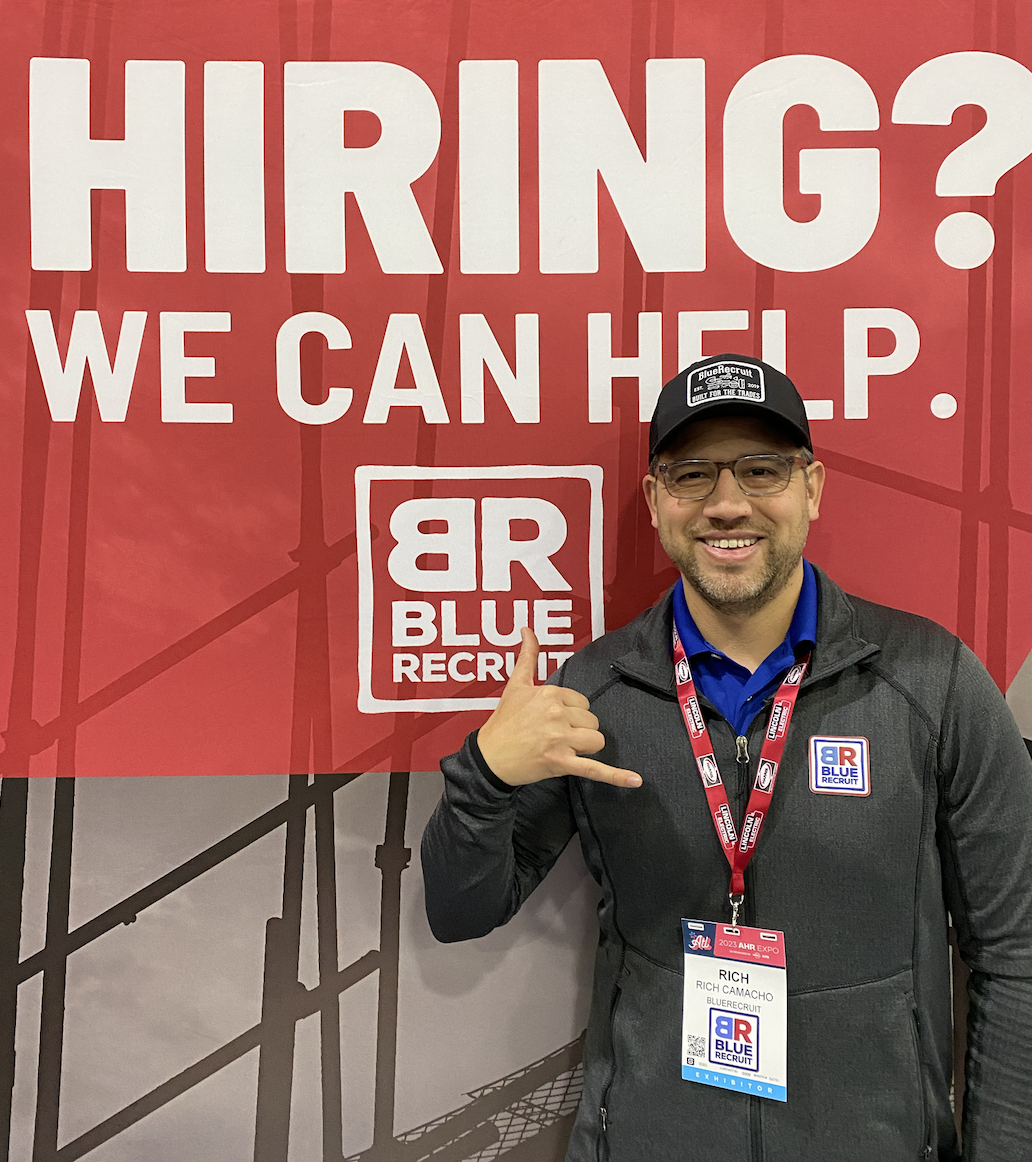 The insistence that you can only hire extremely experienced workers is a major hurdle to growth. Too often people complain “young people don’t want to work,” “they’re lazy,” “they are avoiding the trades to be social media influencers,” etc. Well, guess what? When you refuse to even interview someone trying to launch their skilled trades career, you become a major part of the problem. That business owner needs to remember that they were once a brand-new Apprentice, and someone took the time to train them. We will never train the trades’ next generation if we do not give them the opportunity to get started.
The insistence that you can only hire extremely experienced workers is a major hurdle to growth. Too often people complain “young people don’t want to work,” “they’re lazy,” “they are avoiding the trades to be social media influencers,” etc. Well, guess what? When you refuse to even interview someone trying to launch their skilled trades career, you become a major part of the problem. That business owner needs to remember that they were once a brand-new Apprentice, and someone took the time to train them. We will never train the trades’ next generation if we do not give them the opportunity to get started.
MH: Piggybacking off of this, how do we do a better job highlighting pay, lifestyle, for example, as huge positives while reducing the negative stereotypes with the trades?
CAMACHO: A major trend we have seen in recent years is that the average person is now well aware of the compensation potential in the trades. Trade and vocational schools are seeing higher enrollment than ever before. After all, if you’ve had your AC replaced or made an emergency plumbing call in the last three years you can vividly recall how many zeros where in that invoice.
However, what we as an industry are failing to promote is the flexibility the trades provides and the intrinsic benefit of the work itself. Compensation is actually the third most important factor for Job Seekers in deciding between job offers. A lasting impact of COVID is the desire for flexible schedules, and the trades often provide this freedom. Second, an astounding 87% of trades workers report being either satisfied or very satisfied in their work, while 62% of white-collar workers describe their work as “drudgery.” Remember those data points next time you hear a parent tell their child that the only way to succeed in life is by going to traditional 4-year college.
MH: During Covid, contractors were deemed essential workers. Do you think this heightened awareness to the trades as pandemic-proof and recession-proof to a certain extent?
CAMACHO: There is ZERO doubt that the trades are and will forever be the most recession-proof career track. After all, in a downturn economy, a family may decide not to take a planned vacation, might delay that planned home renovation, but they will still make the service call when their air goes out or the sink is overflowing.
With all the terrible that COVID brought us, a lasting positive legacy it left is the light it shined on what I’ll be bold enough to call the “Higher Education Cartel.” Insane student debt levels, often meaningless degrees, and social issues has shown many young people—just as importantly their adult influencers—that the trades are not a secondary option but a true avenue to success. Afterall, graduate enrollment rates are down about 15% from their 2010 highs, but construction focused trade school enrollment is up over 19% in that same period!
MH: We’ve been hearing a lot lately regarding hiring based on work ethic, abilities, desire, etc., and companies can the train the “skill.” Are you in agreement with this? Explain.
CAMACHO: Socrates once said the following, “The children now love luxury; they have bad manners, contempt for authority; they show disrespect for elders and love chatter in place of exercise. Children are now tyrants, not the servants of their households.”
In other words, the older generation has ALWAYS thought that the younger generation is lazy, lacks discipline, etc. I’ll be the first to say that categorizing all young people in this way is simply incorrect. Every single day, whether it be in the interactions we have with students at one of our partnered trade schools, a SkillsUSA classroom, or feedback from a customer, we’re exposed to motivated young people working hard to grow their skills and build a lasting career.
I believe that such character traits are mostly built at a very young age in the home, and unless your company is operating a three-month bootcamp and shaving heads, it is unlikely you can truly develop such soft skills. The best way to see a person’s values and ethics before hiring, is to include personality assessments within your interview process which will identify strengths and weaknesses.
We also recommend having that potential candidate spend a half day onsite, shadowing your team, touring your facility, and ending the interview with a group lunch. This allows your employees to play a part in the hiring process and allows you to see how they will interact with others (including restaurant staff) on a social or personal level.
MH: How does someone get involved with Blue Recruit?
CAMACHO: Couldn’t be easier, go to www.BlueRecruit.com and create your free account in about 5 minutes. You can view live available talent in your area, hire when you’re ready, and if you have any questions, we host live training demos every workday at 10, 12, and 2 pm EST.
Finally, we love working with partners like Mechanical Hub, and we continue to do our part in connecting the workers that keep our country moving forward with tremendous employers.
